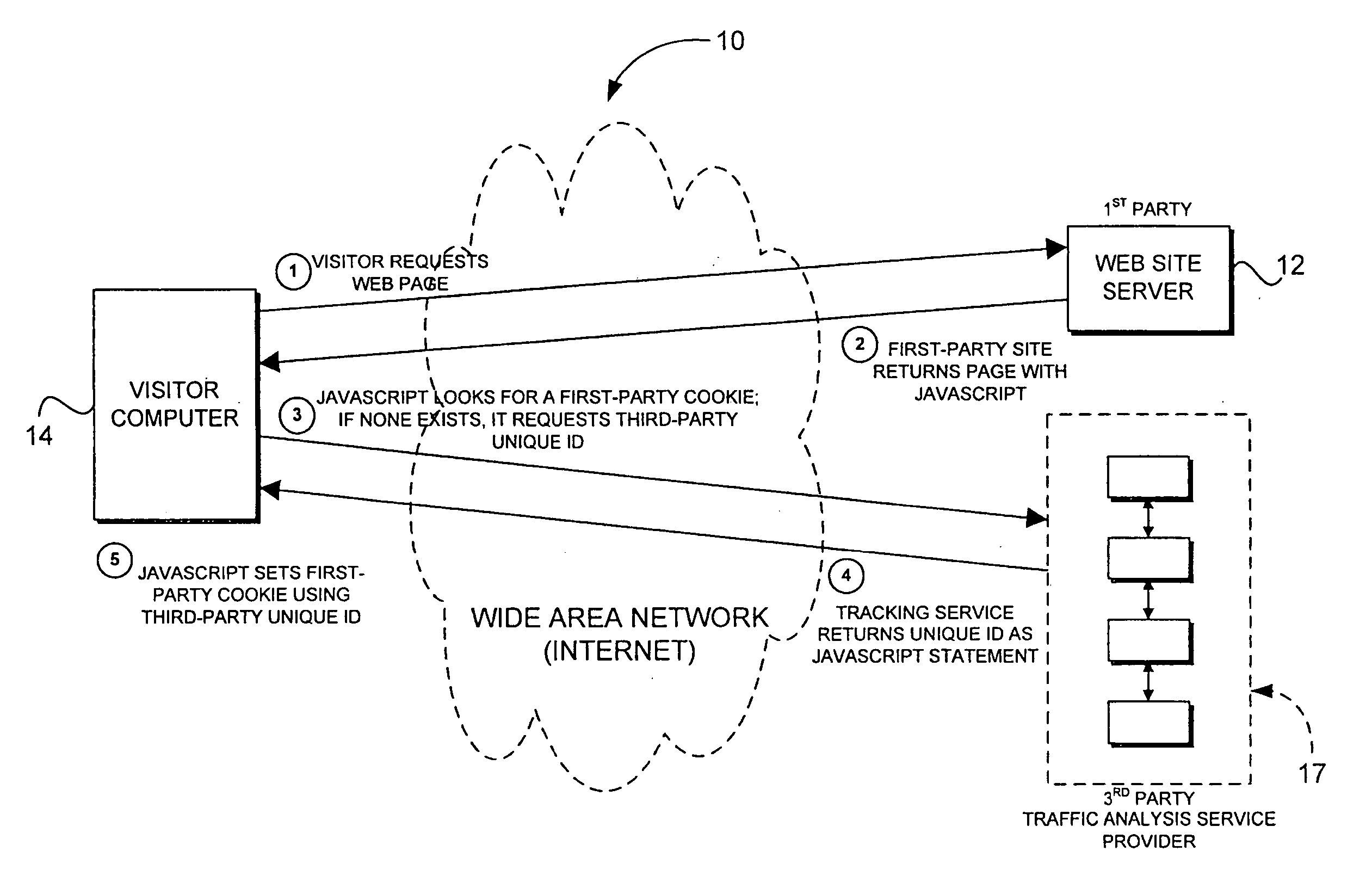First-party cookie for tracking web traffic
a technology of first-party cookies and web traffic, applied in the field of compiling and reporting data, can solve the problems of inaccurate traffic reporting methods relying on third-party cookies, and achieve the effect of improving the accuracy of traffic statistics and suffering in accuracy
- Summary
- Abstract
- Description
- Claims
- Application Information
AI Technical Summary
Benefits of technology
Problems solved by technology
Method used
Image
Examples
example a
New visitor to BrandA.com; Client computer has neither a first-party cookie (FPC) nor a shared third-party cookie (TPC).
[0066] 1) JavaScript recognizes that FPC doesn't exist, so it checks for TPC by making a request to the third-party tracking service. There is no TPC. [0067] 2) JavaScript sets the FPC with a newly created unique identifier and informs the third-party tracking service that a new FPC has been created. [0068] 3) The third-party tracking service sets the TPC with the unique identifier provided.
example b
Returning visitor to BrandA.com; Client computer has both a first-party cookie (FPC) and a shared third-party cookie (TPC).
[0069] 1) JavaScript recognizes that FPC exists, so it sends the unique identifier in the existing FPC to the third-party tracking service. [0070] 2) The third-party tracking service already has a TPC on the client's computer, so it ignores FPC unique identifier.
example c
New visitor to BrandB.com; Client computer has no first-party cookie (FPC) but does have a shared third-party cookie (TPC).
[0071] 1) JavaScript recognizes that FPC doesn't exist, so it checks for TPC by making a request to the third-party tracking service. There is a TPC. [0072] 2) JavaScript sets the FPC using the unique identifier from the TPC, then sends the unique identifier to the third-party tracking service. [0073] 3) Tag server already has a TPC, so it ignores the FPC unique identifier.
PUM
 Login to View More
Login to View More Abstract
Description
Claims
Application Information
 Login to View More
Login to View More - R&D
- Intellectual Property
- Life Sciences
- Materials
- Tech Scout
- Unparalleled Data Quality
- Higher Quality Content
- 60% Fewer Hallucinations
Browse by: Latest US Patents, China's latest patents, Technical Efficacy Thesaurus, Application Domain, Technology Topic, Popular Technical Reports.
© 2025 PatSnap. All rights reserved.Legal|Privacy policy|Modern Slavery Act Transparency Statement|Sitemap|About US| Contact US: help@patsnap.com



